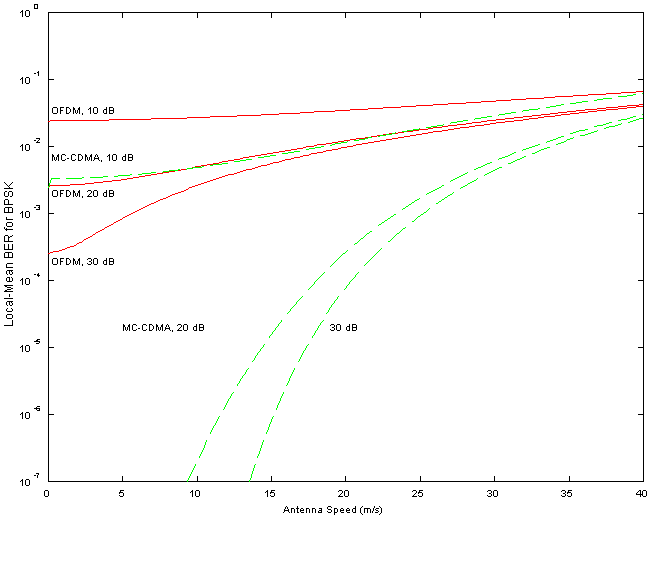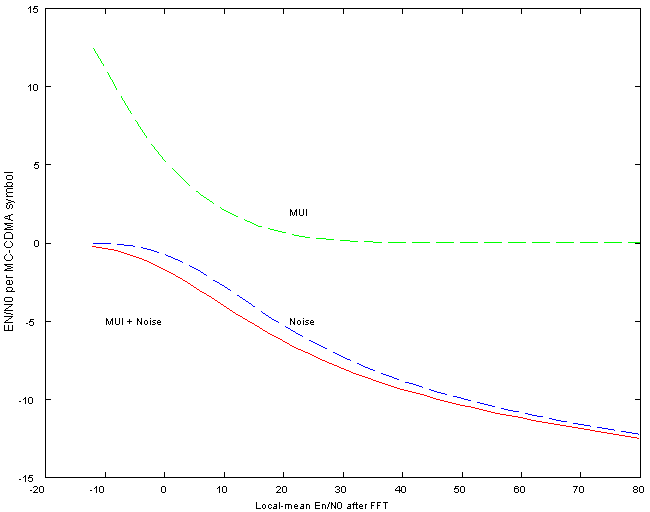

|
JPL's Wireless Communication Reference WebsiteChapter: Analog and Digital
Transmission
|
Contributed by Jean-Paul Linnartz
The Matlab Code used in this MC-CDMA analysis:
Received power P0 (green), and the variances P1, P2, and P2 of the ICI (red) versus the normalized Doppler spread l for pT = 1.


MATLAB ber.m
uses dopplernorm.m to calculate the doppler
uses moments_crude2.m to calculte the
multi-user interference in MC-CDMA, as used in various other programs
Capacity in bits per dimension for OFDM and MC-CDMA versus antenna speed.
Calculates the capacity for a fading channel with OFDM and with MC-CDMA
uses capacity.m and capray.m
MC-CDMA figure of merit z in dB
versus the local-mean SNR on Rayleigh channel. MATLAB

Calcultes the multi-user interference in MC-CDMA, as used in various other programs
 For
more textual details we refer to the following subsections:
For
more textual details we refer to the following subsections:
PDF J.P.M.G. Linnartz, "Performance Analysis of Synchronous MC-CDMA in mobile Rayleigh channels with both Delay and Doppler spreads", IEEE VT, Vol. 50, No. 6, Nov. 2001, pp 1375-1387.
450k PDF A. Gorokhov, J.P.M.G. Linnartz, "Robust OFDM receivers for dispersive time varying channels: equalization and channel acquisition", IEEE Transactions on Communications, Vol. 52, No. 4, april 2004, pp. 572-583
PDF 500k S. Tomasin, A. Gorokhov H. Yang, J.P.M.G. Linnartz, "Iterative Interference cancellation and channel estimation for mobile OFDM", IEEE Transaction in Wireless Communication, Vol. 4, No. 1, Jan. 2005, pp. 238-245.